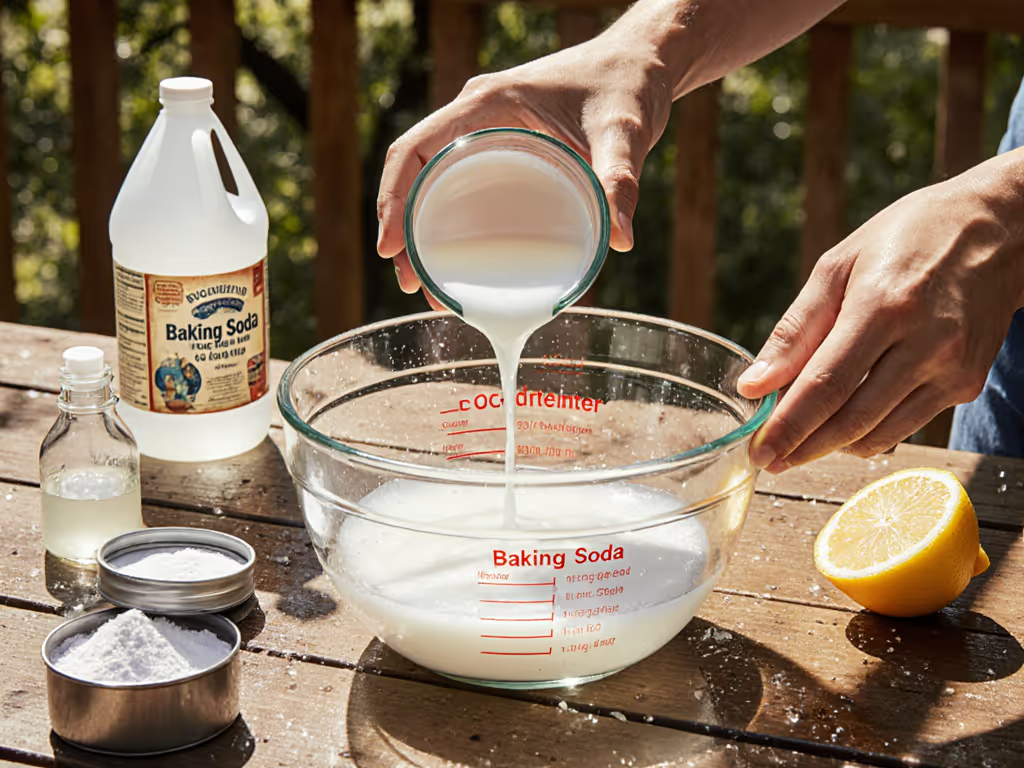
Pressure Washer Water Conservation: Know Your Gallons Per Job
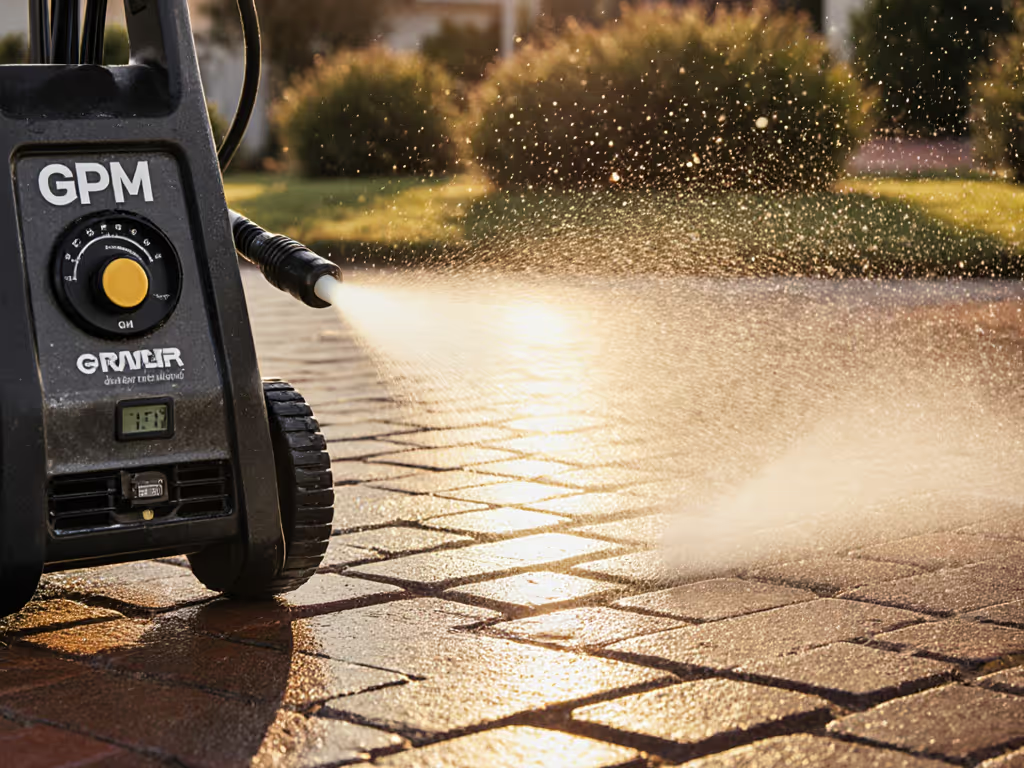
When homeowners reach for a power pressure washer this season, they're often chasing more than just clean surfaces, they're navigating HOA water restrictions, drought ordinances, and the quiet anxiety of how much water will this actually use? The truth is, eco-friendly pressure washer techniques aren't just about environmental stewardship; they're the key to avoiding $400 callbacks from blown cedar joints or tiger-striped siding. Start with the surface; pressure is the last knob. Your patio's grout lines and your deck's grain direction dictate everything (especially water consumption). Ignore this, and you'll waste gallons and damage finishes.
Why GPM Matters More Than PSI for Water Conservation
Most DIYers fixate on PSI (Pounds per Square Inch), but Gallons Per Minute (GPM) is the silent driver of water use. For a deeper breakdown of how PSI and GPM work together and the specs each surface needs, read our PSI vs GPM guide. PSI shatters dirt; GPM removes it. A high-PSI/low-GPM machine may clean slowly, running longer and using more water than a balanced unit. Consider this:
- Garden hose (8-10 GPM): 240 gallons for a 30-minute driveway job
- Typical pressure washer (1.5-2.5 GPM): Just 45-75 gallons for the same job
Data from industry water audits confirms commercial operators using power washer pressures above 3,000 PSI without adjusting GPM waste 20-35% more water through rework due to surface damage. Your target? Match GPM to dwell time (the seconds detergent needs to lift grime before rinsing). Under-dwell = longer spraying = higher water use. Over-dwell = oxidation streaks = rewash cycles.
The Surface Dictates Your Water Budget (Not Vice Versa)
A homeowner recently asked why their cedar steps turned fuzzy after pressure washing. We tested panels: Dropping from 1800 PSI to 1100 PSI, switching to a 40° nozzle, and extending dwell time with an oxygen cleaner reduced water use by 28% while stopping the fuzzing. Why? We respected the wood's porosity. Sustainable cleaning practices begin with surface mapping:
| Surface Type | Safe GPM Range | Max PSI | Critical Water-Saving Tactic |
|---|---|---|---|
| Cedar/Softwood | 1.0-1.4 | 1,100 | 40° nozzle; follow grain; +30s dwell time |
| Composite Decking | 1.2-1.8 | 1,500 | 6" standoff; avoid 0° tips |
| Pavers/Concrete | 2.0-2.5 | 2,500 | 25° nozzle; pre-sweep debris first |
| Vinyl Siding | 1.0-1.5 | 1,300 | Downward strokes; max 12" standoff |
Respect the grain: it's not poetry. It's physics. Forcing water across wood fibers traps moisture, requiring extra rinsing. Following the grain lifts contaminants cleanly, cutting water use by 15-20%.
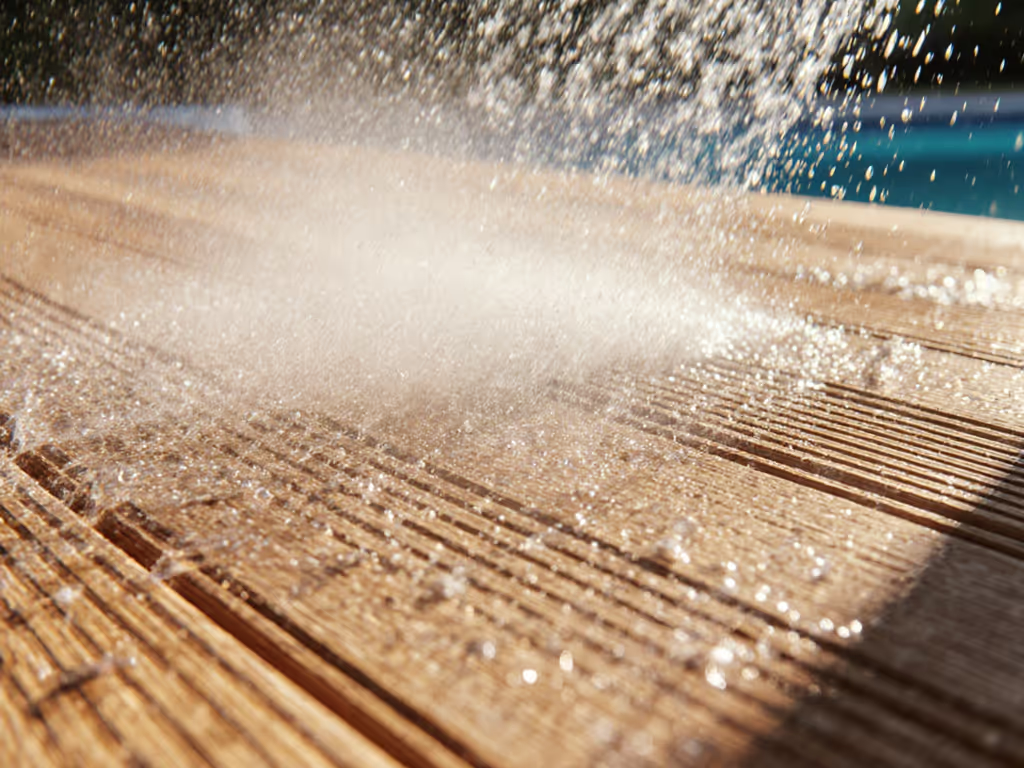
Calculating Gallons Per Job: Stop Guessing
Forget "it depends." With finish-safe thresholds defined, water use becomes predictable. Use this formula:
Total Gallons = (GPM × Cleaning Time) + (Dwell Time × Surface Area × 0.05)
Wait, dwell time's in the equation? Absolutely. Oxygen cleaners on oxidized siding need 5+ minutes to work. Skimp here, and you'll blast at higher PSI longer, increasing total water use. Example:
- 1,200 sq. ft. driveway (medium-duty pavers)
- GPM: 1.8 (e.g., units like the Greenworks 1800 PSI model)
- Cleaning time: 45 mins (2.5 min/sq. ft.)
- Dwell: 3 mins × 1,200 sq. ft. × 0.05 = 180 gal
- Total: (1.8 × 45) + 180 = 81 + 180 = 261 gallons
Compare this to a rushed job: No dwell time, but 2,800 PSI blasting for 70 mins due to stubborn oil stains. Water used? (2.2 × 70) = 154 gallons. But it etched the pavers, requiring a second pass, totaling 308 gallons. Water conservation methods fail when surface safety is ignored.
Three Finish-Safe Tactics to Slash Water Use
-
Optimize Dwell Time, Not PSI For mildew on siding, a 6-minute dwell with a biodegradable cleaner replaces 10+ minutes of high-PSI rinsing. Test first: Spray detergent on a 2x2 ft patch. If grime lifts cleanly at 1,000 PSI in 4 minutes, stick with it. Every minute saved reduces water use by your GPM rate.
-
Master the Nozzle Swap A 40° tip on cedar uses 30% less water than a 25° tip at the same PSI. Why? Wider spray = less overlap = fewer passes. But never drop below your surface's finish-safe threshold (e.g., 1,100 PSI for cedar). Higher PSI with a wider nozzle wastes water and damages wood.
-
Pre-Scan for Hidden Risks Stucco with soft joints? Reduce GPM to 1.2. Sun-baked composite? Add 15 seconds to dwell time before adjusting PSI. One mobile detailer cut water use by 22% simply by noting west-facing decks dried faster, requiring less dwell time than shaded areas.
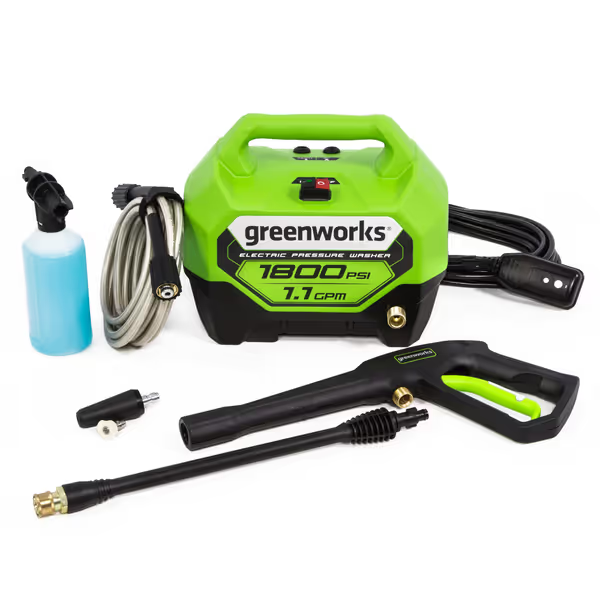
Greenworks 1800 PSI Pressure Washer
Your Actionable Water Conservation Checklist
Before you pull the trigger:
- Identify the surface (e.g., "cedar steps with raised grain") (this sets your PSI cap).
- Calculate minimum dwell (e.g., 4 mins for mildew with oxygen cleaner).
- Pick nozzle angle (40° for wood; 25° for concrete) within safe PSI limits.
- Measure area and plug into the gallons-per-job formula before starting.
- Track actual use with a flow meter; adjust for humidity/temperature next time.
Last summer in drought-stricken Arizona, a pool service operator avoided HOA fines by mapping his clients' surfaces first. Using 1.4 GPM at 1,200 PSI with 5-minute dwell on pebble-finish concrete, he cut water use by 33% versus neighbors' gas units. His secret? He didn't chase PSI. He respected the finish.
Next Step: Map Your Surface Water Budget
Pull out your pressure washer manual now and note its GPM. Then, pick one surface on your property (e.g., the front porch). Using the table above, calculate your safe PSI/GPM range and estimated gallons. Test it this weekend: Time your dwell, log PSI, and measure water used. You'll gain two things: proof that low water usage cleaning protects surfaces and the confidence to tackle any job within your water limits. Because when you start with the surface, not the machine, the water savings follow.
Related Articles

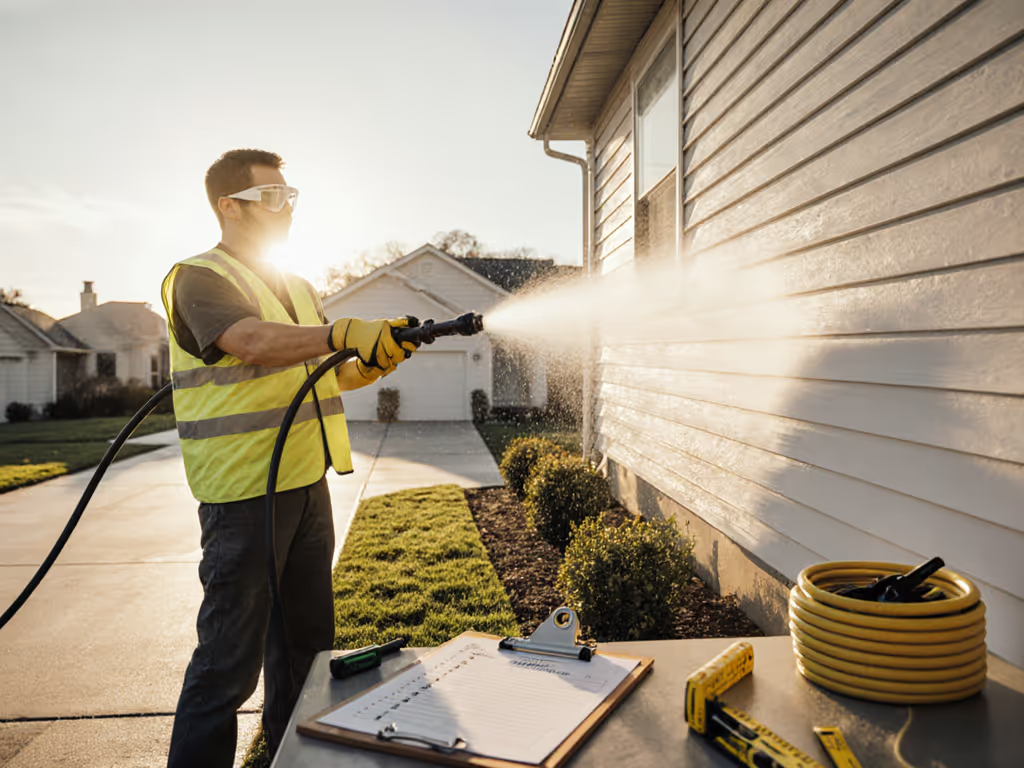
Pressure Washer Safety Guidelines: Avoid Costly Mistakes
Optimize your pressure washer for safety and cost savings with clear, numbers-driven guidance on PPE, nozzle choice, cord sizing, chemical ratios, and ergonomics. Learn to flow-match and measure water pressure and noise to cut injuries, rework, and fines while using less water.
